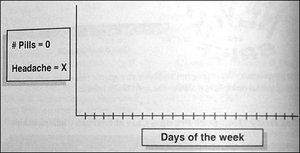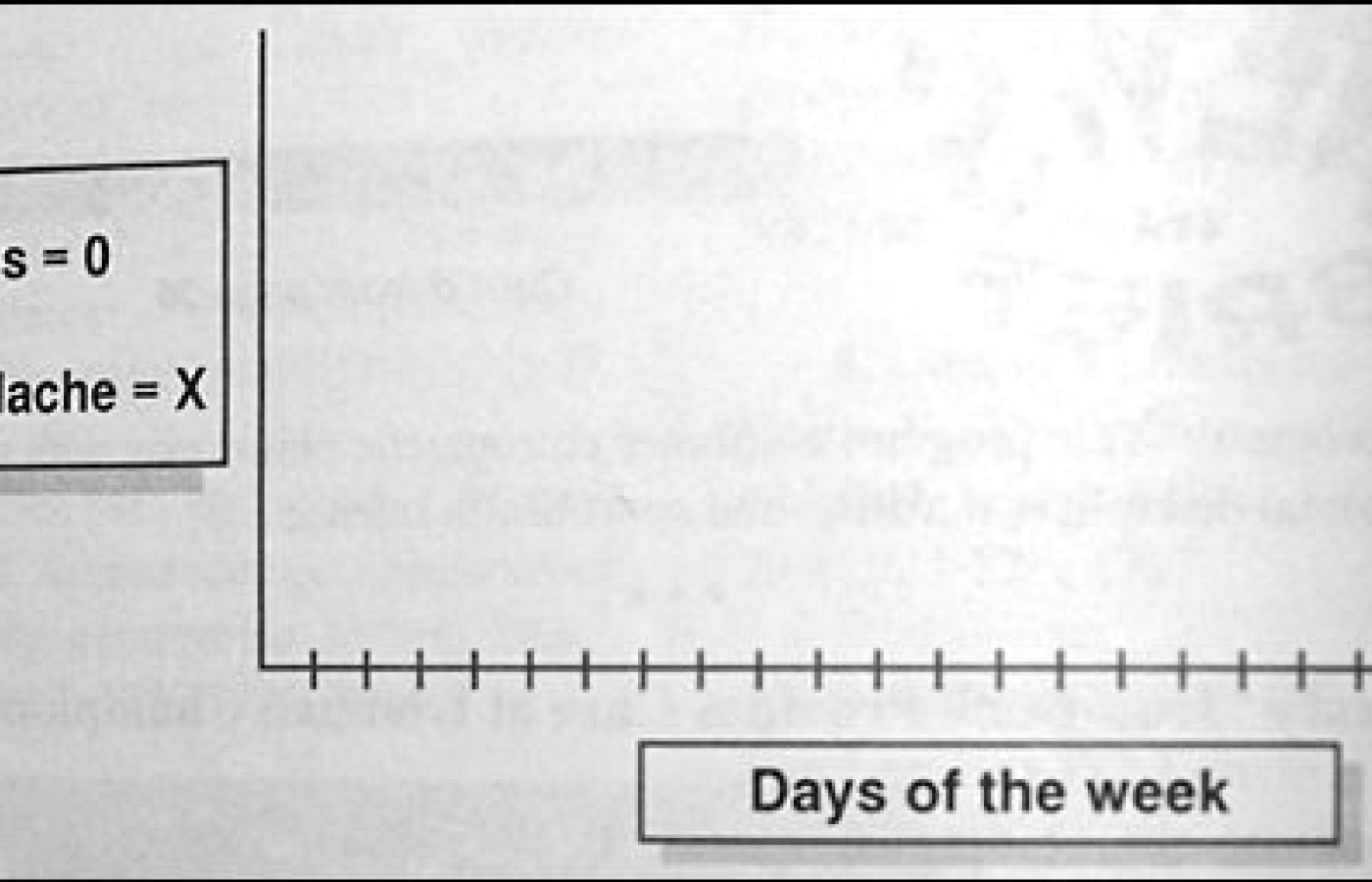Some doctors thrive in a personality-based clinic and have a loyal following no matter what services or equipment they offer, but for most chiropractic offices who are trying to grow and expand, new equipment purchases help us stay relevant and continue to service our client base in the best, most up-to-date manner possible. So, regarding equipment purchasing: should you lease, get a bank loan, or pay cash?
Rebound Headache: Some Helpful Charts to Monitor Medication Use
"Not everything that can be counted counts, and not everything that counts can be counted."-- Albert Einstein (1879-1955)
I received quite a few letters about my article on rebound headache ("Don't Take Aspirin, but Call Me in the Morning") from the October 6, 1997 issue of DC. Many of them asked for additional help in weaning the patient off of the over-the-counter pain medications, so I decide to write this followup article for anyone wanted more information.
Helpful Charts to Use with the Rebound Headache Patient
Here's a key reminder about the ramping down of medications causing rebound headache. Once rebound headache has occurred, up to 80% of patients will have their condition resolve simply by discontinuing usage of the offending drug. Depending on the pharmaceutical agent causing rebound headache, the weaning off process may vary. When ergots are the cause, it may be necessary to refer to a neurologist specializing in headaches and medication withdrawal. The worst withdrawal process is with the patient who has been taking butalbital or other barbiturate daily or near daily. The patient will need a gradual withdrawal program to prevent potentially serious withdrawal reactions. Aspirin, acetaminophen, and caffeine can be discontinued suddenly, but the patient can expect a worsening of the rebound headache over the next several days, with peak severity in the first week or so, followed by a gradual lessening for up to three months.
Keep in mind that the patient will be left with the original underlying primary headache disorder. Make sure the patient realizes this before undertaking a program of either sudden or gradual withdrawal of the offending medication, as you and the patient will need time to evaluate the benefit of discontinuation.
The drugs most often implicated in rebound headache are:
- acetaminophen or ASA products;
- caffeine;
- narcotics;
- barbiturates;
- ergotamine products;
- anti-inflammatories (NSAIDS).
The role of NSAIDS has not been made clear, possibly because it is only recently that patients could self-medicate with them. Although NSAIDS have been used as prophylactic agents in migraine headaches, frequent use of NSAIDS should be avoided in migraine patients until their role is more fully understood.
Treatment
Obviously, the best treatment for rebound headache is to prevent it from occurring in the first place. This is accomplished, in part, with patient awareness. Patients must be educated about the benefits of regular exercise; regular meal times; adequate sleep; the avoidance of headache triggers; employing stress reduction techniques; and (most of all) avoiding the regular use of analgesics.
Baseline Charts
Taking the baseline activity of drug use is a requisite to any program that intends to take the patient of the medication that is contributing to the rebound phenomena. Two easy-to-use charts can be used by the patient at home or work for this purpose.
The first chart (see Figure 1) is given to the patient right away so that they can plot the number of headache pills taken per day. The patient also plots their headache on the days when they occur. This is part of the baseline information.

[Figure 1: This chart is used to measure headache frequency vs. medication use.]
[Scan chart from hard copy or create chart. Arnetta, if you want, you can make these charts pretty large if we need to fill some space.]
The second chart (see Figure 2) is given to the patient right away so that they can plot the duration of their headaches against the frequency of their headaches. This is also part of the baseline information.

[Figure 2: This chart is used to measure headache duration vs. headache frequency.]
Withdrawal of Daily Acute Medication
The first step in treating patients with rebound headache is to withdraw them from the medications that are creating the problem. Simply telling the patient to discontinue the medication on a gradual basis is not as helpful as specifically charting the gradual withdrawal dosage on a weekly calendar. Using the information taken from the baseline charts, the doctor then plots the scheduled decrease on a withdrawal chart (see Figure 3) while the patient fills in their actual daily use and the appearance of headache.

[Figure 3: A withdrawal chart such as this will be used to measure the scheduled decrease in the amount of medication for a patient.]
Final Comments
The chiropractor and the patient must always be mindful of the risks of excessive medication use as well as the effects of withdrawal. With proper planning, education and a motivated patient successful treatment is all but assured.
Darryl Curl, DDS, DC
Norco, California
doc_curl-ix.netcom.com



